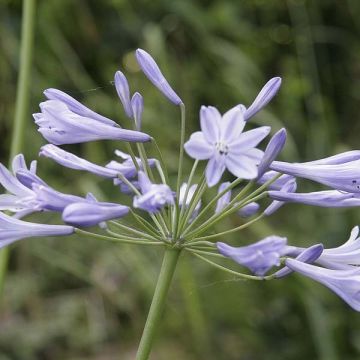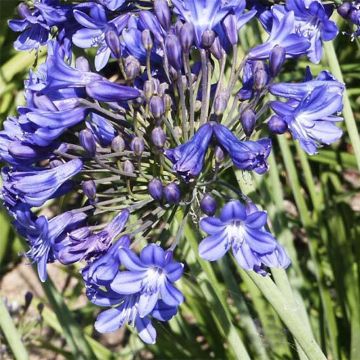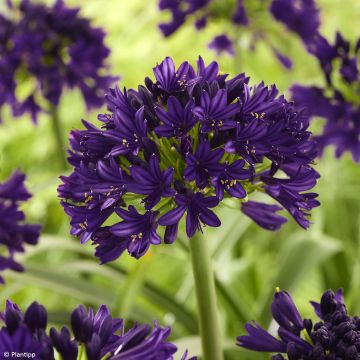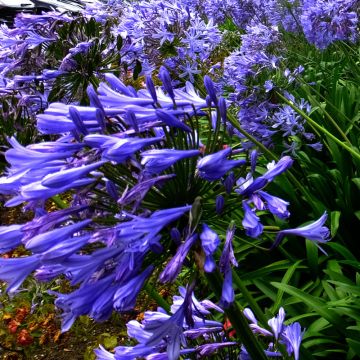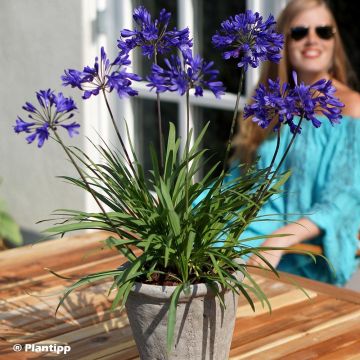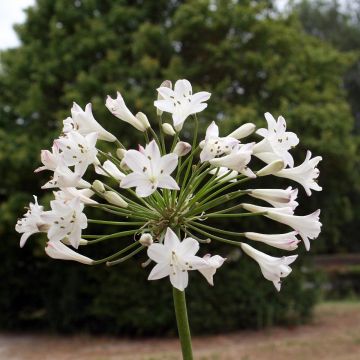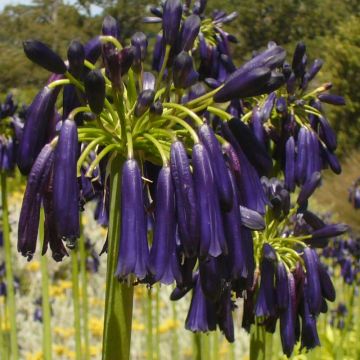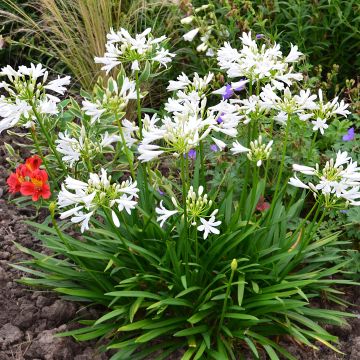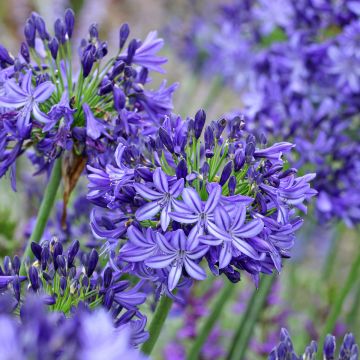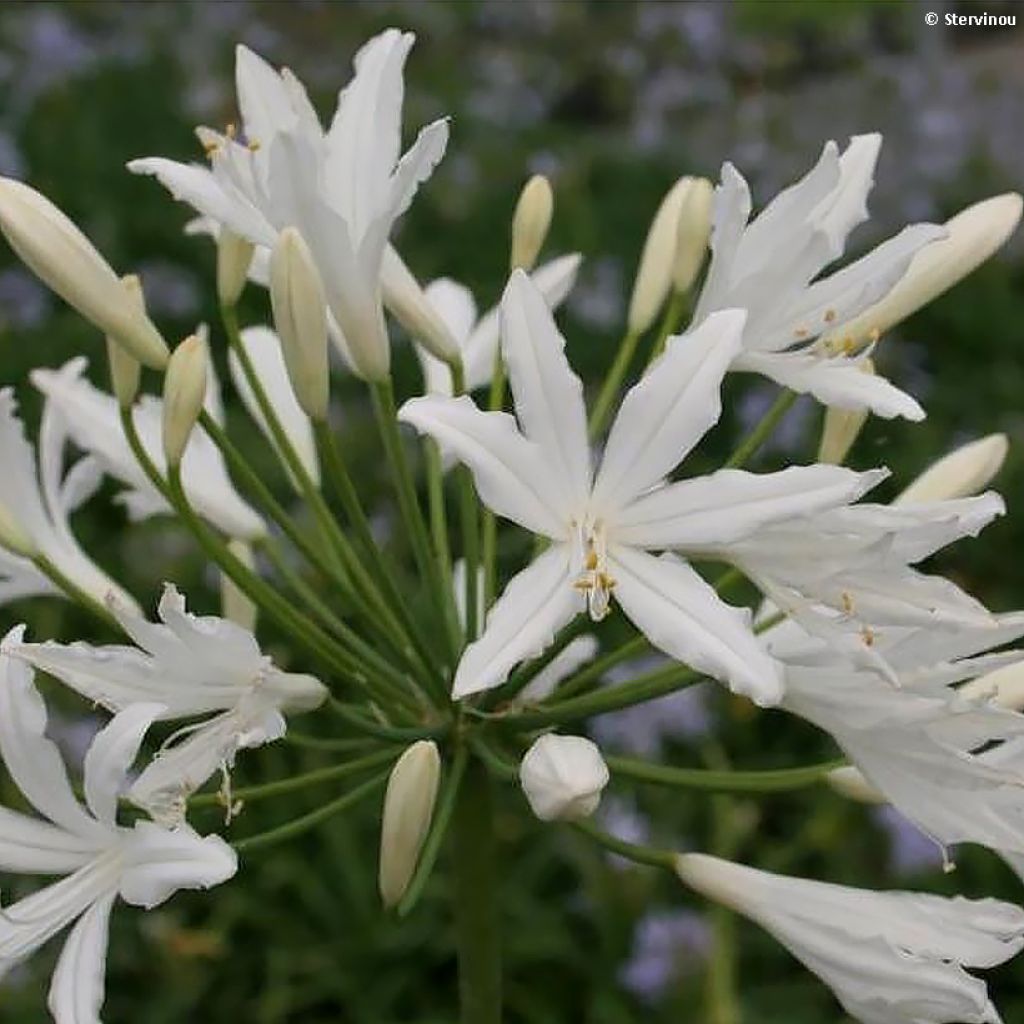

Agapanthe hybride Vallée de la Sarthe
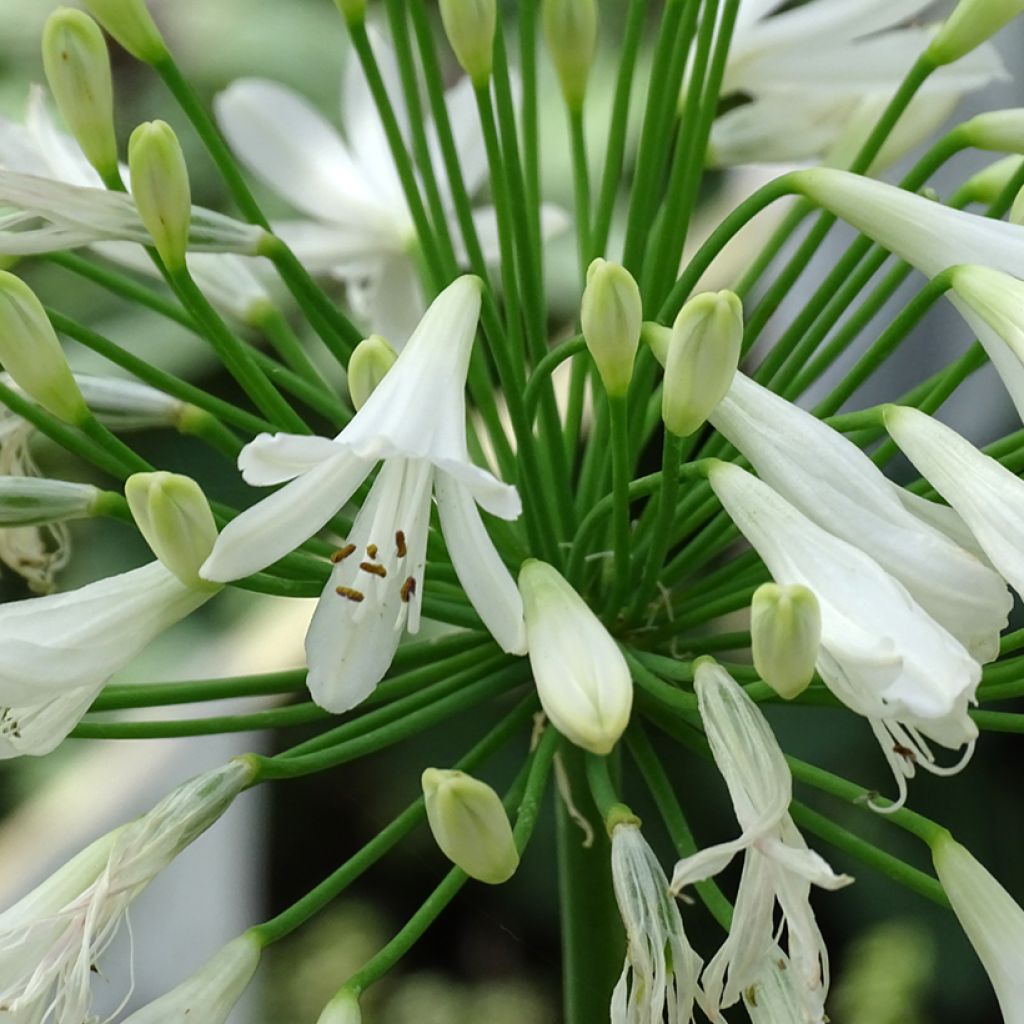

Agapanthe hybride Vallée de la Sarthe
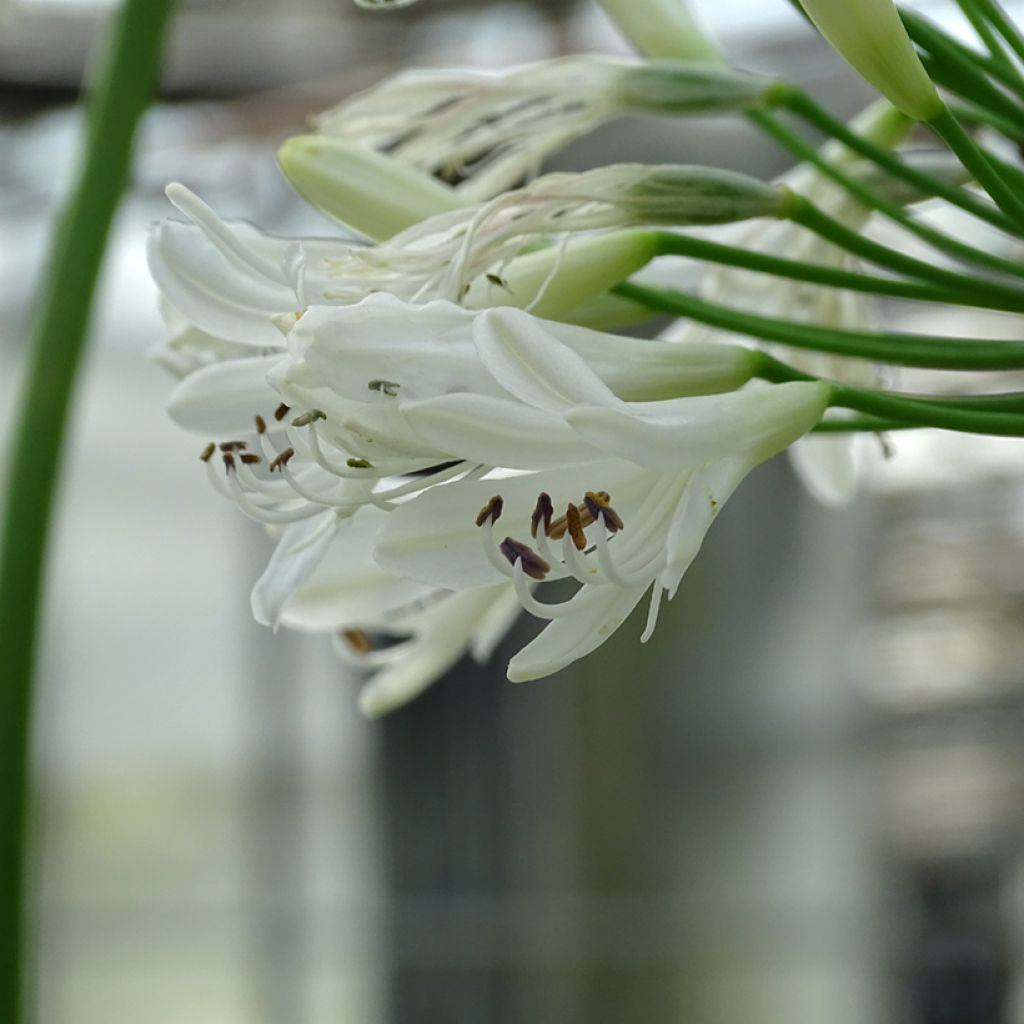

Agapanthe hybride Vallée de la Sarthe
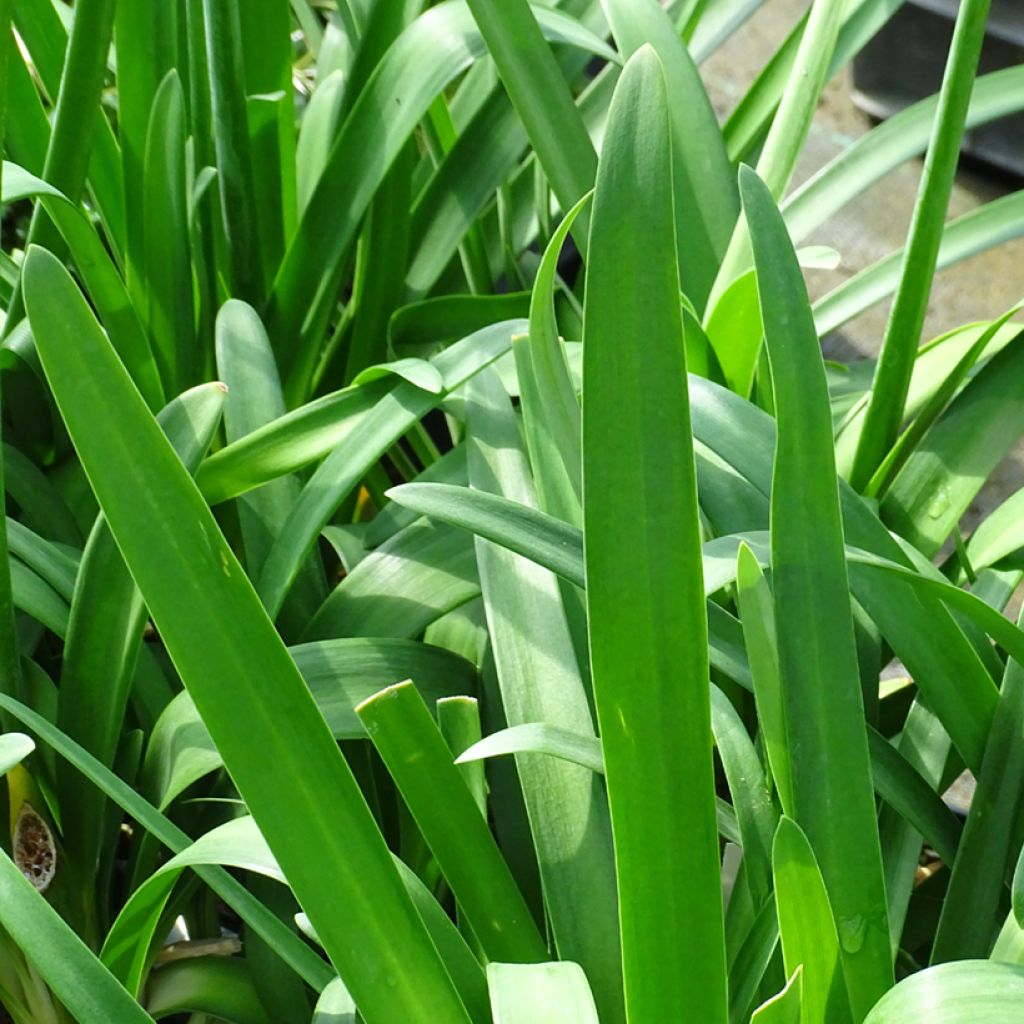

Agapanthe hybride Vallée de la Sarthe
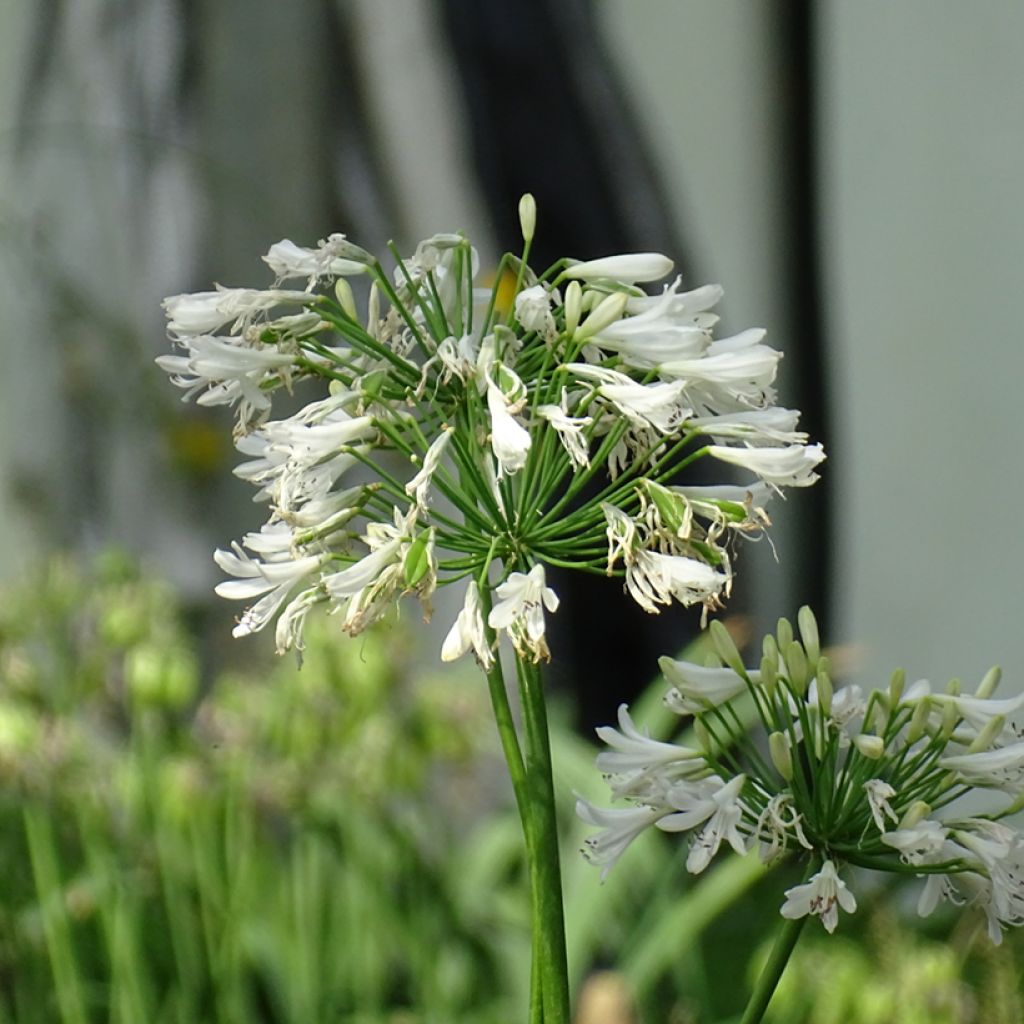

Agapanthe hybride Vallée de la Sarthe
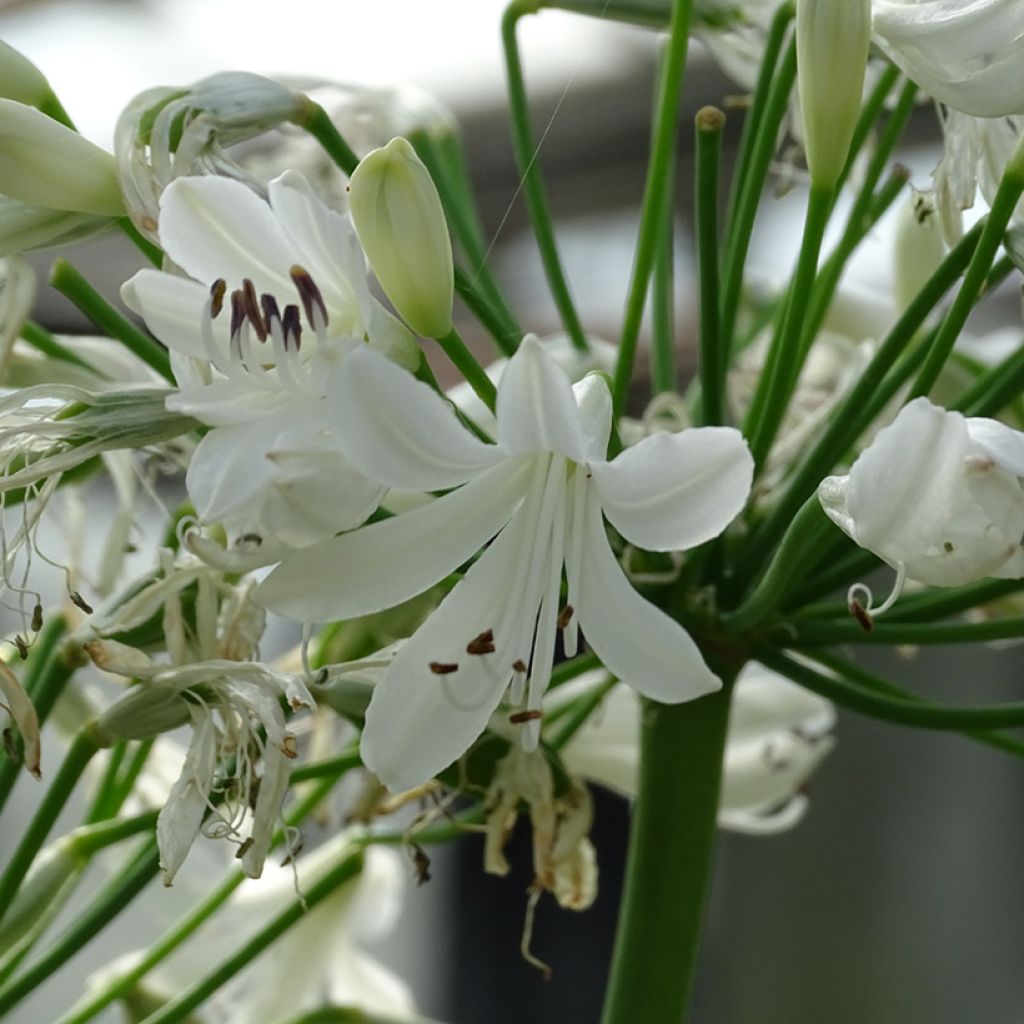

Agapanthe hybride Vallée de la Sarthe
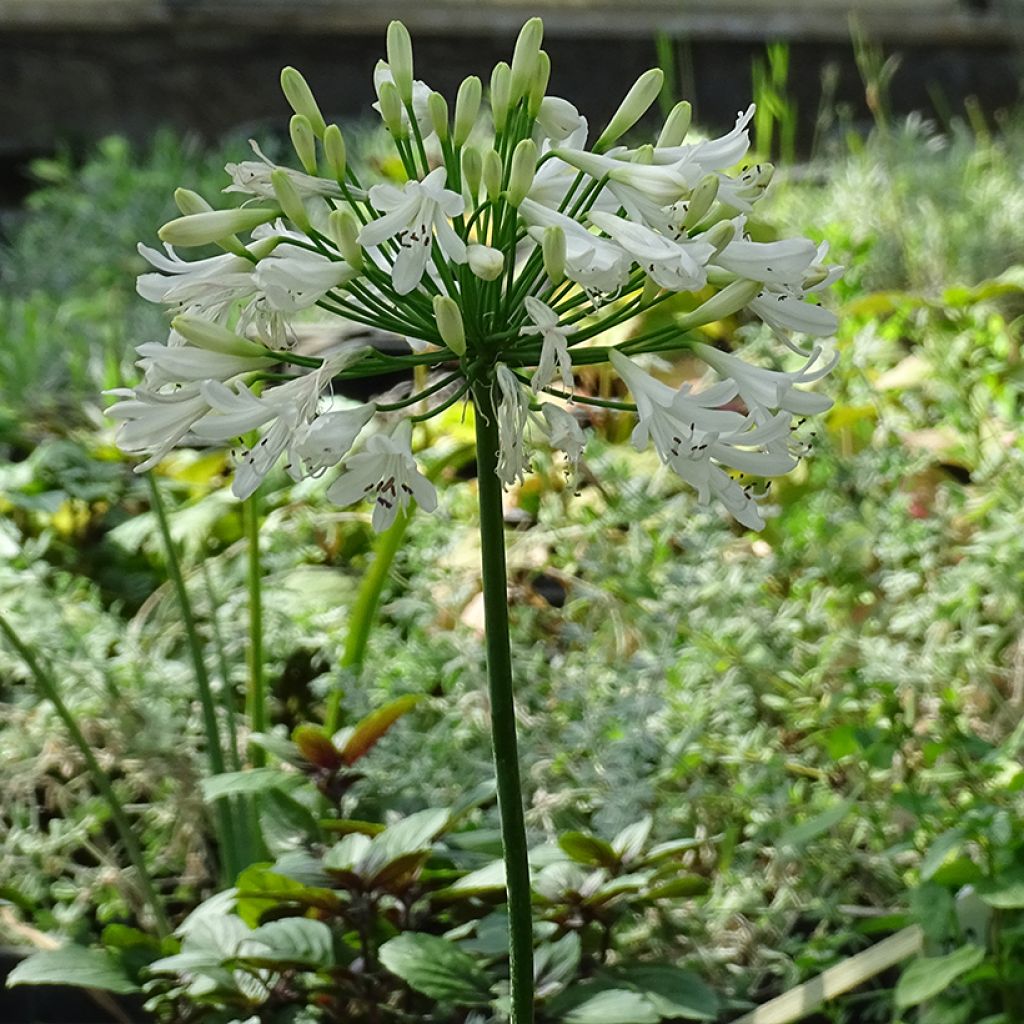

Agapanthe hybride Vallée de la Sarthe
Agapanthus hybridus Vallée de la Sarthe
Agapanthus x hybridus Vallée de la Sarthe
African Lily, Lily of the Nile
This item cannot be shipped to the selected country
Delivery charge from €5.90
More information
Schedule delivery date,
and select date in basket
This plant carries a 12 months recovery warranty
More information
We guarantee the quality of our plants for a full growing cycle, and will replace at our expense any plant that fails to recover under normal climatic and planting conditions.
From €5.90 for pickup delivery and €6.90 for home delivery
Express home delivery from €8.90.
Does this plant fit my garden?
Set up your Plantfit profile →
Description
Agapanthus 'Vallée de la Sarthe' is adorned in summer with large umbels of pure white flowers, very bright. They emerge from a beautiful tuft of vibrant green ribbon-like leaves that remain decorative in winter. Ideal in a white garden, in a pot or in the ground, it will create elegant borders or very flowery pots. Like all evergreen Agapanthus, this variety is not very hardy, but particularly suited to the Atlantic coast or the Mediterranean coast. And its flowers can be used to create beautiful bouquets.
Agapanthus are plants of the lily family originating from South Africa. Several species have been extensively hybridized by horticulturists in search of new colours, more compact and hardier plants, better adapted to our climates. The 'Vallée de la Sarthe' cultivar was selected by P. Turc in Anjou, France. This variety is named after the Sarthe River, which flows into the Loire near Angers. This perennial plant develops and multiplies rapidly from a stump with fleshy rhizomes, forming over time a dense tuft of linear foliage, of a vibrant and shiny green, about 40cm (16in) in all directions. Flowering, abundant, takes place between late June and late August depending on the climate. Numerous cylindrical flowering stems about 80-90cm (32-35in) tall emerge from the foliage tuft. They bear at their tip hemispherical umbels 15-20cm (6-8in) in diameter, composed of numerous campanulate flowers in the shape of flared trumpets. Each flower is composed of 6 petals fused into a tube at the base, pure white in colour. The shiny and vibrant green foliage of this variety persists in winter.
Agapanthus 'Vallée de la Sarthe' stands out in the garden or on the terrace, especially in a contemporary or exotic setting. This new variety will easily adapt in our mild regions, especially if its stump is protected by a thick mulch in winter. Whether in a mass planting, as a border, in a large rockery, in a pot or planter, Agapanthus is suitable for a wide range of uses. It is particularly suited to coastal climates. 'Vallée de la Sarthe' is very beautiful, associated with other blue, mauve or white varieties in a minimalist setting. It is also very decorative in exotic-themed plantings with Dianella, Kniphofias, Hemerocallis, grasses and Cannas.
Report an error about the product description
Agapanthus hybridus Vallée de la Sarthe in pictures
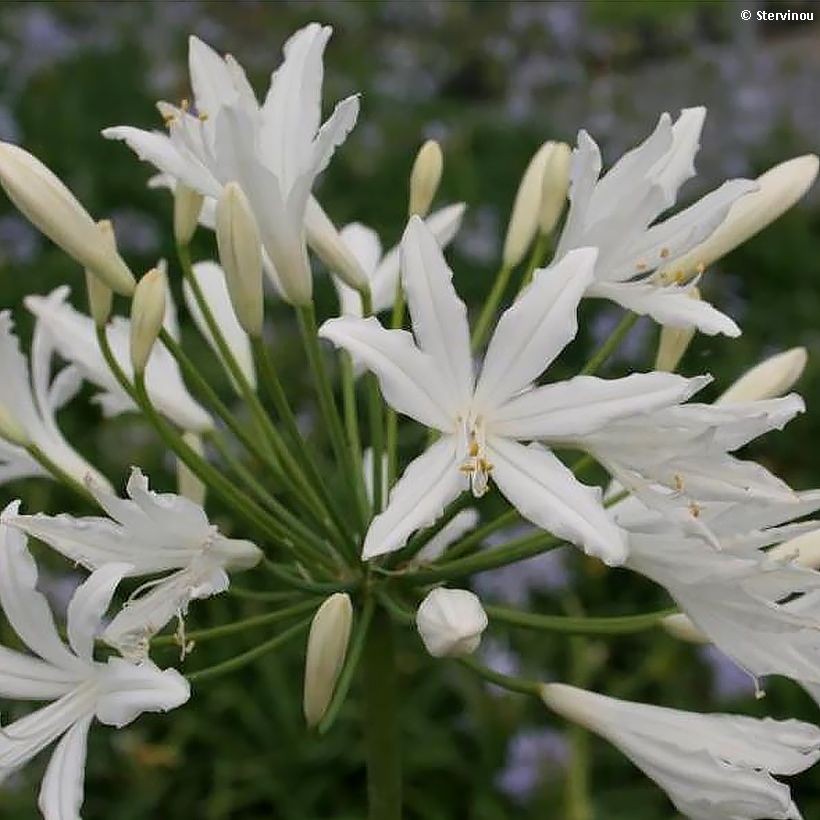

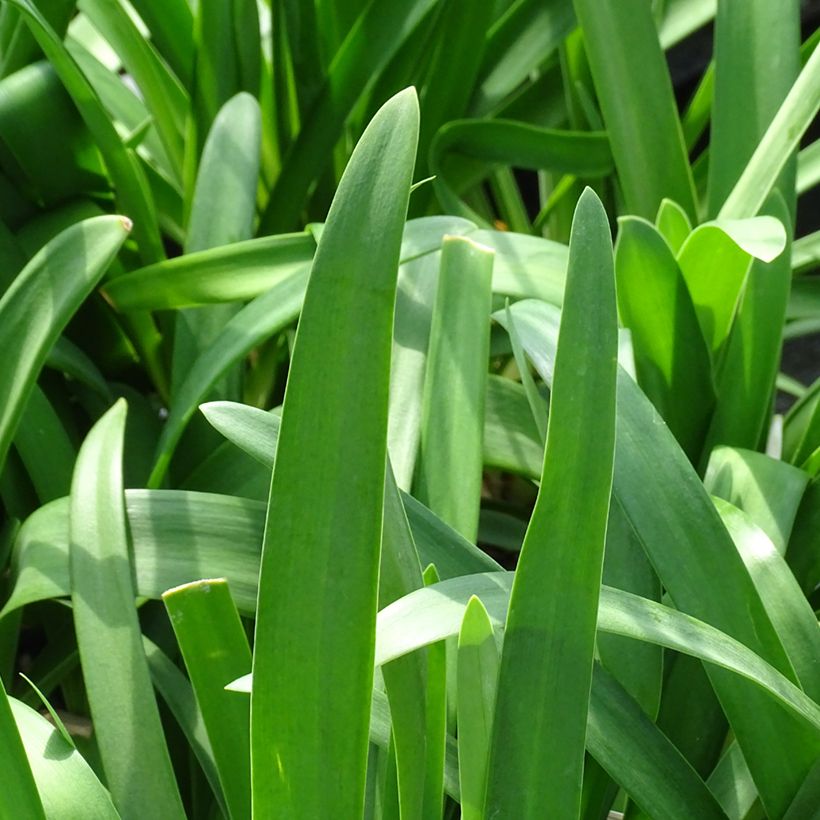

Flowering
Foliage
Plant habit
Botanical data
Agapanthus
x hybridus
Vallée de la Sarthe
Alliaceae - Liliaceae
African Lily, Lily of the Nile
Cultivar or hybrid
Other Agapanthus - Lily of the Nile
Planting and care
Plant the stumps of 'Vallée de la Sarthe' Agapanthus by covering them with at least 10cm (4in) of good soil, this way they will better resist the cold. It is essential to plant them in spring and preferable to mulch them in winter in most of our regions. For pot cultivation, use 5 young plants for a 24cm (9in) pot and shelter your pots in winter. They prefer a rich and moist but well-drained soil, enriched with sand. Water them regularly during the growth period (twice a week). However, avoid watering them afterwards. They fear excess moisture in winter. This variety is hardy up to approximately -7°C in sheltered exposure, it particularly thrives by the seaside. Its foliage can be damaged from -3°C. A well-drained sandy mixture, slightly acidic, should be used. This plant seems to prefer shallow but wide containers, and will flower abundantly if regularly fed with slow-release fertilizer.
Planting period
Intended location
Care
This item has not been reviewed yet - be the first to leave a review about it.
Haven't found what you were looking for?
Hardiness is the lowest winter temperature a plant can endure without suffering serious damage or even dying. However, hardiness is affected by location (a sheltered area, such as a patio), protection (winter cover) and soil type (hardiness is improved by well-drained soil).

Photo Sharing Terms & Conditions
In order to encourage gardeners to interact and share their experiences, Promesse de fleurs offers various media enabling content to be uploaded onto its Site - in particular via the ‘Photo sharing’ module.
The User agrees to refrain from:
- Posting any content that is illegal, prejudicial, insulting, racist, inciteful to hatred, revisionist, contrary to public decency, that infringes on privacy or on the privacy rights of third parties, in particular the publicity rights of persons and goods, intellectual property rights, or the right to privacy.
- Submitting content on behalf of a third party;
- Impersonate the identity of a third party and/or publish any personal information about a third party;
In general, the User undertakes to refrain from any unethical behaviour.
All Content (in particular text, comments, files, images, photos, videos, creative works, etc.), which may be subject to property or intellectual property rights, image or other private rights, shall remain the property of the User, subject to the limited rights granted by the terms of the licence granted by Promesse de fleurs as stated below. Users are at liberty to publish or not to publish such Content on the Site, notably via the ‘Photo Sharing’ facility, and accept that this Content shall be made public and freely accessible, notably on the Internet.
Users further acknowledge, undertake to have ,and guarantee that they hold all necessary rights and permissions to publish such material on the Site, in particular with regard to the legislation in force pertaining to any privacy, property, intellectual property, image, or contractual rights, or rights of any other nature. By publishing such Content on the Site, Users acknowledge accepting full liability as publishers of the Content within the meaning of the law, and grant Promesse de fleurs, free of charge, an inclusive, worldwide licence for the said Content for the entire duration of its publication, including all reproduction, representation, up/downloading, displaying, performing, transmission, and storage rights.
Users also grant permission for their name to be linked to the Content and accept that this link may not always be made available.
By engaging in posting material, Users consent to their Content becoming automatically accessible on the Internet, in particular on other sites and/or blogs and/or web pages of the Promesse de fleurs site, including in particular social pages and the Promesse de fleurs catalogue.
Users may secure the removal of entrusted content free of charge by issuing a simple request via our contact form.
The flowering period indicated on our website applies to countries and regions located in USDA zone 8 (France, the United Kingdom, Ireland, the Netherlands, etc.)
It will vary according to where you live:
- In zones 9 to 10 (Italy, Spain, Greece, etc.), flowering will occur about 2 to 4 weeks earlier.
- In zones 6 to 7 (Germany, Poland, Slovenia, and lower mountainous regions), flowering will be delayed by 2 to 3 weeks.
- In zone 5 (Central Europe, Scandinavia), blooming will be delayed by 3 to 5 weeks.
In temperate climates, pruning of spring-flowering shrubs (forsythia, spireas, etc.) should be done just after flowering.
Pruning of summer-flowering shrubs (Indian Lilac, Perovskia, etc.) can be done in winter or spring.
In cold regions as well as with frost-sensitive plants, avoid pruning too early when severe frosts may still occur.
The planting period indicated on our website applies to countries and regions located in USDA zone 8 (France, United Kingdom, Ireland, Netherlands).
It will vary according to where you live:
- In Mediterranean zones (Marseille, Madrid, Milan, etc.), autumn and winter are the best planting periods.
- In continental zones (Strasbourg, Munich, Vienna, etc.), delay planting by 2 to 3 weeks in spring and bring it forward by 2 to 4 weeks in autumn.
- In mountainous regions (the Alps, Pyrenees, Carpathians, etc.), it is best to plant in late spring (May-June) or late summer (August-September).
The harvesting period indicated on our website applies to countries and regions in USDA zone 8 (France, England, Ireland, the Netherlands).
In colder areas (Scandinavia, Poland, Austria...) fruit and vegetable harvests are likely to be delayed by 3-4 weeks.
In warmer areas (Italy, Spain, Greece, etc.), harvesting will probably take place earlier, depending on weather conditions.
The sowing periods indicated on our website apply to countries and regions within USDA Zone 8 (France, UK, Ireland, Netherlands).
In colder areas (Scandinavia, Poland, Austria...), delay any outdoor sowing by 3-4 weeks, or sow under glass.
In warmer climes (Italy, Spain, Greece, etc.), bring outdoor sowing forward by a few weeks.

































